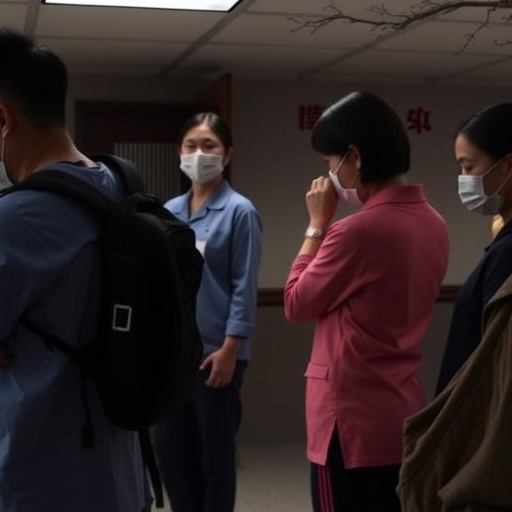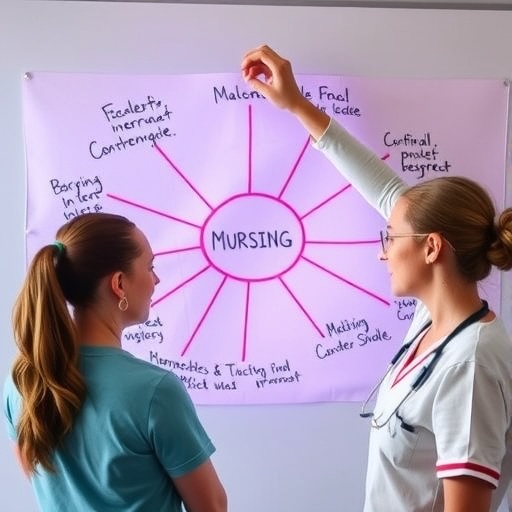PROTECT YOUR DNA WITH QUANTUM TECHNOLOGY
Orgo-Life the new way to the future Advertising by AdpathwayIn an era where medical advancements are rapidly evolving, there has been an increasing focus on specialized care strategies for unique patient populations. Among these, adult burn patients represent a particularly vulnerable group, as they encounter multifaceted challenges during recovery. A groundbreaking consensus has emerged from a team of esteemed Chinese experts, aimed at addressing the critical issues of venous thromboembolism (VTE) within this demographic. This consensus, formulated in 2024, provides urgent guidelines and essential strategies for the prevention, diagnosis, and management of VTE, underscoring the importance of tailored healthcare approaches for burn victims.
Venous thromboembolism is a severe condition that can pose significant risks for patients addressing the aftermath of severe burns. VTE encompasses a spectrum of complications, notably deep vein thrombosis (DVT) and pulmonary embolism (PE). For adult patients suffering from extensive burns, the physiological stress combined with potential immobility can elevate VTE risk, making awareness and preemptive measures crucial. The new expert consensus sheds light on the multidimensional factors contributing to this increased vulnerability among burn patients, prompting healthcare teams to take proactive steps in care protocols.
In this extensive consensus, the experts delineate several pivotal areas of focus, beginning with the prevention strategies for VTE. The consensus emphasizes the necessity of early mobilization and physical rehabilitation for burn patients, arguing that these actions are not merely therapeutic but essential for VTE prophylaxis. As burns can often lead to prolonged periods of immobility, particularly in critical cases requiring extensive healing, engaging patients in physical activity as soon as feasible is emphasized as a cornerstone of care.
Furthermore, the consensus artfully details the pharmacological interventions available for VTE prevention, discussing the role of anticoagulant therapy. Burn patients might often benefit from the use of specific anticoagulants which are systematically analyzed in the consensus. Considerations such as dosing protocols, potential side effects, and individualized approach based on patient history are meticulously outlined, reinforcing the nuanced decisions healthcare providers must make when treating burn survivors at risk of VTE.
Diagnosis is another focal point of the expert consensus, where the complexities of diagnosing VTE in burn patients are addressed. Classic symptoms like leg swelling or pain might be obscured by the primary challenges of burn recovery, including significant edema and pain management issues. Hence, the consensus suggests a proactive approach, recommending routine screening for high-risk patients to ensure early detection. The consensus provides a clear framework for using advanced imaging techniques and diagnostic tools tailored to the specific needs of burn victims.
Effective management strategies for diagnosed VTE cases in burn patients are crucial. The new consensus delineates evidence-based protocols for managing confirmed cases of DVT or PE, discussing both medical treatment and the pivotal role of surgical interventions when necessary. The necessity of a multidisciplinary approach is highlighted, integrating input from surgeons, critical care specialists, and rehabilitation experts to optimize recovery.
The implications of VTE on the long-term recovery of burn patients cannot be overstated, and the expert consensus emphasizes this in its call for comprehensive care. Beyond addressing the immediate threat of thromboembolic events, the consensus stresses that managing VTE effectively can lead to improved functional outcomes and quality of life for burn survivors. In practice, this means fostering an environment of increased vigilance among healthcare providers and ensuring that VTE prevention remains a priority throughout a patient’s recovery journey.
Education and ongoing training for healthcare professionals are also critical aspects discussed in the consensus. The authors advocate for integrating the findings of this consensus into educational curricula, ensuring that upcoming medical professionals are equipped with the knowledge and skills to manage the complexities associated with VTE in burn patients. This educational push aims to not only improve immediate care strategies but also cultivate a culture of prevention that spans the entirety of burn care.
Equally important is the consensus’s emphasis on research gaps that still exist in the landscape of VTE management within the burn patient population. By highlighting areas necessitating further exploration, the authors call upon the scientific community to engage in research endeavors that will bolster the evidence base for the management of this dual crisis. Engaging in data-driven studies will allow for the refinement of existing protocols and the development of innovative strategies that will better serve burn patients at risk of thromboembolic complications.
The implementation of the recommendations in this consensus holds the potential to revolutionize the standard of care for burn patients in China and beyond. As healthcare systems seek to provide optimal patient outcomes, the integration of studies like this will be crucial in paving the way for future improvements. The collaborative effort reflected in this consensus not only underscores the importance of expert opinions but also demonstrates the success of collective knowledge in tackling shared medical challenges.
Notably, one of the critical advancements illustrated in the findings is the application of technological innovations in monitoring and managing VTE risk. The consensus acknowledges the role of telemedicine and mobile health technologies in enhancing patient engagement and adherence to preventive measures. This integration represents a promising frontier in supporting patients during the often-isolating recovery period associated with severe burns.
In conclusion, the expert consensus set forth by Zhu, Liu, Zhou, and colleagues marks a pivotal moment in the understanding and management of VTE within adult burn patients. The comprehensive nature of the guidelines—ranging from prevention strategies and diagnostic protocols to management approaches—provides invaluable insight to healthcare professionals. As the medical community continues to grapple with the complexities of caring for burn patients, such detailed consensus frameworks will prove essential in translating clinical challenges into actionable solutions. Emphasizing a holistic and coordinated approach can fundamentally enhance patient outcomes and ensure that the vulnerable population of adult burn victims receives the care and attention they deserve.
This expert consensus is set to influence not only clinical practice but also shape future research, education, and healthcare policies aimed at enhancing the care of burn patients and mitigating the risks of VTE. Such dedicated efforts serve as a reminder of the ongoing quest for improved outcomes in the face of multifaceted healthcare challenges.
Subject of Research: Prevention, diagnosis, and management of venous thromboembolism in adult burn patients.
Article Title: Chinese expert consensus on prevention, diagnosis, and management of venous thromboembolism in adult burn patients.
Article References: Zhu, F., Liu, XB., Zhou, W. et al. Chinese expert consensus on prevention, diagnosis, and management of venous thromboembolism in adult burn patients (2024). Military Med Res 12, 74 (2025). https://doi.org/10.1186/s40779-025-00653-9
Image Credits: AI Generated
DOI:
Keywords: venous thromboembolism, burn patients, prevention, diagnosis, management, expert consensus, healthcare strategies.
Tags: 2024 VTE management recommendationsadult burn recovery challengesburn patient managementdeep vein thrombosis risk factorsexpert consensus on VTE guidelinesmultifaceted challenges in burn treatmentproactive care protocols for burn patientspulmonary embolism in burn patientsspecialized care strategies for burn injuriestailored healthcare for burn victimsthromboembolism complications in severe burnsvenous thromboembolism prevention


 9 hours ago
8
9 hours ago
8





















 English (US) ·
English (US) ·  French (CA) ·
French (CA) ·